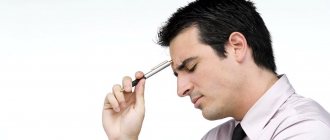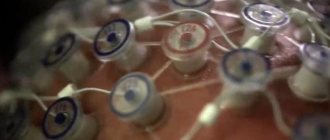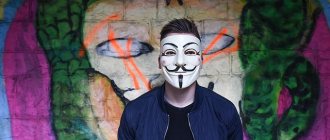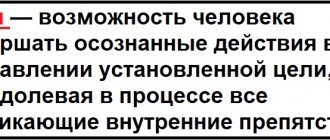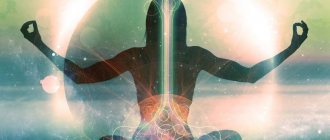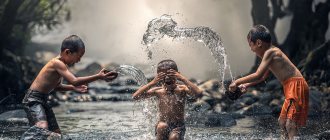Observation
Only observation provided primary data about the object or subject being studied. These were facts that were collected by observers at different times. The observation could be spontaneous, or it could be purposeful.
There were no hypotheses, no scientific assumptions that needed to be confirmed. Observation is used only to collect information, which is sometimes collected bit by bit. Facts are always distinguished by their reliability and simplicity of presentation.
In this way, the initial characteristics of the object , its reactions to interaction with the environment in natural conditions are described.
General structure
It includes the following required elements:
- the subject of cognition, as well as his direct activity;
- object for conducting the experiment;
- means of influencing the analyzed object
Such elements are rightfully considered universal. On their basis, experimental activities are carried out not only in research institutes and laboratories, but also in ordinary educational organizations.
Experiment
This method is used when it is necessary to prove or disprove any hypothesis. It is divided into theoretical and practical parts. During the experiment, the subject, object, subject under study is removed from its usual habitat and is subjected to various influences.
Conditions may change, but they are always manageable. The object's reactions are seriously studied and recorded.
Modern science requires that the author of the experiment first illuminate:
- relevance of your topic;
- research problem;
- object of study;
- target;
- tasks;
- implementation of results;
- hypothesis;
- significance.
An experiment is always divided into several stages. Conducted in the form of a scientific project.
Preparing for the experiment
Since this is a large and lengthy scientific event, it is advisable to carry out a preparatory stage, which includes:
- Organization and implementation of the project.
- Identifying the algorithm for organizing and implementing the project, following it (drawing out a “passport”, which includes the name of the experiment, information about the leader, researchers, research topic, methods, hypothesis, deadlines).
- Description of conclusions.
Start
The work begins with researching scientific works on the chosen topic. Diagnostics and scientific reconnaissance are being carried out, which will help determine how covered this topic is at the current time.
Works that mention the selected object of study are identified. The scope of disclosure of the chosen topic is examined, to what extent it is covered in science and literature.
Theory
Before conducting an experiment, the topic, hypothesis, confirmation and refutation of the hypothesis by other scientific researchers are recorded. Concepts are described, definitions are given, assumptions are made.
The theoretical part is very important, as it is a necessary basis. When the topic is covered in theory, the hypothesis is made, experiments begin.
Experience
This is the practical component of the experiment. A series of experiments is carried out, representing a purposeful action. When the experiment is implemented, the hypothesis is confirmed or refuted. Sometimes special equipment is required.
Experiments represent the creation of certain, controlled conditions for the test object, the study of its reactions.
Experience is designed to confirm the hypothesis in practice, and experiment consolidates it.
Experience, experiment, children's experimentation. Characteristics of the conceptual series
First, let's define the content of the terms used. The word "experiment"
comes from the Greek word
“expe riten tum”,
which translates as “test, experience”. “Modern Dictionary of Foreign Words” (1994) contains the following definition:
experiment
- this is “1) a scientifically conducted experiment, observation of the phenomenon being studied under scientifically taken into account conditions, allowing one to monitor the progress of the phenomenon and reproduce it many times when these conditions are repeated; 2) experience in general, an attempt to accomplish something.”
The Great Soviet Encyclopedia adds: “Different from observation by actively operating the object under study, an experiment is carried out on the basis of theory, determines the formulation of problems and the interpretation of its results.” “ An experiment ... is a systematic observation. Thus, a person creates the possibility of observations, on the basis of which his knowledge about the patterns in the observed phenomenon is formed” (“Brief Philosophical Encyclopedia”, 1994).
“Soviet Encyclopedic Dictionary” (1997): “Experiment... sensory-objective activity in science; in a narrower sense of the word - experience, reproduction of the object of knowledge, testing of hypotheses, etc.”
From the original meaning of the Greek “experimentum” and from the above definitions it is clear that in the narrow sense of the word the terms “ experience ” and “ experiment ” are synonymous: “The concept of experience essentially coincides with the category of practice, in particular, experiment, observation” (TSB, 1974). However, in a broad sense, “ experience acts both as a process of human influence on the external world, and as a result of this influence in the form of knowledge and skills” (“Soviet Encyclopedic Dictionary”, 1987).
The next three terms we need are taken from the Dictionary of the Russian Language (1984): “ Experiment . Perform experiments" and "Experimentation. Action according to the meaning of the verb experiment.” “Experimentation. 1. Conducting experiments. 2. Tendency to experiment.”
In science, experimentation is used to obtain knowledge unknown to humanity as a whole. In the learning process, it is used to obtain knowledge unknown to this particular person. Since the patterns of experiments carried out by adults and children do not coincide in many ways, for the sake of brevity, we will agree to use the phrase “ children’s experimentation ” in this manual in relation to preschool institutions.
Like most words in the Russian language, " experimentation" is an ambiguous word. It acts as a teaching method if it is used to transfer new knowledge to children. It can be considered as a form of organization of the pedagogical process, if the latter is based on the method of experimentation. And finally, experimentation is one of the types of cognitive activity of children and adults, as can be seen from the definitions given above.
Ivanova A.I. Methodology for organizing environmental observations and experiments in kindergarten: A manual for workers of preschool institutions. - M.: TC Sfera, 2004. - P. 8-9.
- Tags:
- experiment
- children's experimentation
- Ivanova
- experimentation
- experience
Specifics of a psychological experiment
In psychology, experimental research has its own specificity, which allows it to be considered separately from research in other sciences. The specificity of a psychological experiment is that:
- The psyche as a construct cannot be directly observed and its activity can only be learned based on its manifestations, for example, in the form of certain behavior.
- When studying mental processes, it is considered impossible to single out any one of them, and the impact always occurs on the psyche as a whole (or, from a modern point of view, on the body as a single indivisible system).
- In experiments with people (as well as some higher animals, for example, primates), there is active interaction between the experimenter and the subject.
- This interaction, among other things, makes it necessary for the subject to have instructions (which, obviously, is not typical for natural science experiments).
Stages of a psychological experiment
The general model of conducting a psychological experiment meets the requirements of the scientific method. When conducting a holistic experimental study, the following stages are distinguished [7]:
- Primary statement of the problem
- Formulation of a psychological hypothesis
- Working with scientific literature
- Search for definitions of basic concepts
- Compiling a bibliography on the research topic
- Refining the hypothesis and defining variables
- Definition of experimental hypothesis
- Selecting an experimental tool that allows:
- Control the independent variable
- Log dependent variable
- Design of a pilot study
- Highlighting Additional Variables
- Selecting an Experimental Design
- Sampling and distribution of subjects into groups in accordance with the adopted plan
- Conducting an experiment
- Preparation of the experiment
- Instructing and motivating subjects
- Actually experimenting
- Primary data processing
- Compiling tables
- Converting information form
- Data checking
- Statistical processing
- Selection of statistical processing methods
- Converting an experimental hypothesis into a statistical hypothesis
- Carrying out statistical processing
- Interpretation of results and conclusions
- Recording the research in a scientific report, article, monograph, letter to the editor of a scientific journal
Hypothesis Example
If your research work involves analyzing the qualities of fireweed, we suggest making a short introduction. Theoretical studies have shown that in Rus' they used an infusion of fireweed tea for the treatment and prevention of various diseases. The unique properties of this drink are confirmed by research conducted by Russian chemist Pyotr Aleksandrovich Badmaev. He claimed that he was able to live a hundred years only because he constantly consumed an infusion of a unique plant.
Ivan tea has a unique chemical composition, so it is rightly called nature’s pantry. The content of ascorbic acid in it is six times higher than that in lemon.
Experimental research methods have shown that the drink is suitable for the prevention of colds. Gradually, the traditions of using fireweed are being lost, and this healthy drink is undeservedly excluded from the diet.
Considering the relevance of the issue under consideration, the research work will compare the chemical properties of fireweed and classic tea, identifying their similar and distinctive parameters.
Purpose of the study: quantitative determination of ascorbic acid in taken tea samples, comparison of taste characteristics of the samples used.
Hypothesis: in terms of the quantitative composition of ascorbic acid and organoleptic parameters, Indian tea is significantly inferior to fireweed.
The preparation and conduct of the experiment is carried out precisely on the basis of the hypothesis put forward.
Experiment as a research method
When studying phenomena, it is possible to use several types of methods: active (experiments) and passive (observation, archival and biographical research).
The experimental method implies the active influence or induction of the process under study, the presence of the main and control (as similar as possible to the main, but not influenced) experimental groups. According to their semantic purpose, they distinguish between a research experiment (when the presence of a relationship between the selected parameters is unknown) and a confirmatory experiment (when the relationship between the variables is established, but it is necessary to identify the nature of this relationship). To construct a practical study, it is necessary to initially formulate definitions and the problem being studied, formulate hypotheses, and then test them. The resulting results are processed and interpreted using mathematical statistics methods that take into account the characteristics of the variables and samples of subjects.
The distinctive features of experimental study are: artificial independent organization of conditions for the activation or appearance of a certain psychological fact being studied, the ability to change conditions and eliminate some of the influencing factors.
The entire construction of experimental conditions comes down to determining the interaction of variables: dependent, independent and secondary. An independent variable is understood as a condition or phenomenon that can be varied or changed by the experimenter (selected time of day, proposed task) in order to trace its further influence on the dependent variable (words or actions of the subject in response to the stimulus), i.e. parameters of another phenomenon. When defining variables, it is important to identify and specify them so that they can be recorded and analyzed.
In addition to the qualities of specificity and recordability, there must be consistency with validity and reliability, i.e. the tendency to maintain the stability of the indicators of its registration and the preservation of the obtained indicators only under conditions that repeat the experimental ones regarding the chosen hypothesis. Secondary variables are all factors that indirectly affect the results or course of the experiment, be it lighting or the level of alertness of the subject.
The experimental method has a number of advantages, including the repeatability of the phenomenon being studied, the ability to influence the results by changing variables, and the ability to choose the beginning of the experiment. This is the only method that gives the most reliable results. Among the reasons for criticism of this method is the instability, spontaneity and uniqueness of the psyche, as well as subject-subject relationships, which by their presence do not coincide with scientific rules. Another negative characteristic of the method is that the conditions only partially reproduce reality, and accordingly, confirmation and 100% reproduction of the results obtained in laboratory conditions in real conditions is not possible.
